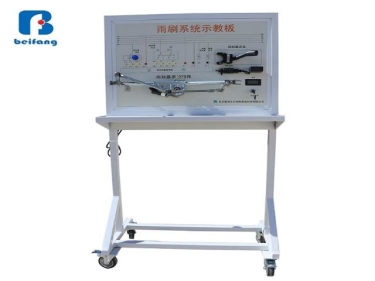Asia-Pacific Comprehensive Economic Partnership in 2023
The Asia-Pacific Comprehensive Economic Partnership (APCEP) is an important regional trade agreement to be implemented in 2023.

The world has entered a new year, and the international economy is preparing for a challenging period filled with turbulence and uncertainty. The International Monetary Fund (IMF) has predicted a "third year of recession" due to the COVID-19 pandemic's aftermath, the ongoing war in Ukraine, and the global energy and inflationary crisis.
To promote global growth and stability and ensure that 2023 will be the year of global economic recovery, countries need to increase joint economic cooperation. While this is important for all countries, the need to achieve this goal for Asian countries is greater than ever. The Regional Comprehensive Economic Partnership (RCEP), on which great hopes are pinned in 2023, can contribute greatly. This region's success will significantly impact the global outlook this year, as it is a major source of growth and the engine of the global economy.
What is RCEP?
On November 15, 2020, 15 countries in the Asia-Pacific region entered into the largest free trade agreement in history, known as the Regional Comprehensive Economic Partnership (RCEP). It includes the ten countries of the Association of Southeast Asian Nations (ASEAN), China, Japan, the Republic of Korea (ROK), Australia, and New Zealand. Designed as a framework for trade and services facilitation, the RCEP seeks to transform the future global trading system by introducing a new common Asian economic integration model that refocuses global connections toward the Asia-Pacific region. The trade agreement is expected to lower trade and service barriers for nearly 30 percent of the world's population and production and generate $186 billion per year for the global economy and 0.2 percent of GDP for its participants permanently.
The primary significance of the RCEP is its uniform rules of origin for all 15 participating countries, meaning that only one certificate of origin will be required, which bypasses the separate procedures for each country. Harmonized rules and procedures, in addition to minimizing costs, affect many processes, including digitalization, relocation of production, and regionalization at the regional level, as well as standardization of national procedures through changes in customs and tariffs, taxation, public administration, subsidies and access to the labor market at the national level. This also leads to a reorganization of the supply chain along the main routes by streamlining processes. Thus, given the complexity of trade transactions in the Asia-Pacific region, the agreement not only affects trade processes but also allows the development of the manufacturing sector and the strengthening of regional supply chains.
Potential of the Agreement
The RCEP serves as a strong safeguard against protectionism and unilateralism and a practical incentive for free trade and multilateral economic cooperation. Over the past year, the trade agreement has lowered the cost of trade, helped integrate production chains, and benefited consumers in the region. Its application has helped Asia-Pacific economies recover, offsetting the negative effects of sluggish global demand and other factors. The RCEP also supports coordinated regional economic growth and contributes to developing a free market economy. The free trade zone's open and stable unified market is attracting more and more foreign investment from around the world, helping the zone withstand external economic shocks. Over the past year, an increase in direct investment among member states points to a booming process of industrial integration and greater sustainability and stability of manufacturing, supply chains, and value chains in the region.

Through close cooperation with other member countries, China has strived to achieve high-quality implementation of the RCEP through its openness and development to promote regional economic integration. Data from the Ministry of Commerce show that China's trade with other RCEP signatory countries increased by 7.9% year on year to 11.8 trillion yuan (about $1.69 trillion) in the first 11 months of 2022, accounting for 30.7% of China's total foreign trade.
In the new year, China will further unlock the development potential of the RCEP agreements and share the dividends of its economic growth with other countries in the region and beyond, providing stability and confidence in the recovery of regional and global economies.
Indonesia, the New Member of the RCEP
On January 2, 2023, the Comprehensive Regional Economic Partnership officially came into force for Indonesia. The private sector can now export to or import from Indonesia using the reduced tariffs outlined in the trade agreement. Additionally, the private sector may benefit from trade facilitation and streamlined rules of origin in their commercial dealings with Indonesia.
Indonesia is the largest economy in ASEAN and the fifth largest among the RCEP parties. Its economy rose by 3.7% in 2022 to reach US$1.186 trillion, accounting for 4% of the RCEP nations' combined GDP. Moreover, the World Bank projected Indonesia's economy to grow by 4.8% in 2023.
The entry into force of the RCEP Agreement for Indonesia brings the full implementation of the agreement one step closer to ASEAN becoming the center of production networks in the region.
Conclusions
To sustain stability and guarantee that diplomacy plays its proper role in resolving issues, nations in the Asia-Pacific region must cooperate and uphold the spirit of multilateral engagement. The RCEP agreement demonstrates that the geopolitical climate in the Asia-Pacific region does not have to be one of the zero-sum outcomes, and nations do not need to miss out on growth possibilities. The relative improvements in expanding economic connection and involvement must also be highlighted.
This year, the RCEP agreement has the potential to contribute to global and Asia-Pacific economic stability. The upcoming year must be one of recovery and transparency. The countries of the world's fastest-growing region must cooperate and avoid getting caught up in geopolitical turmoil to protect their interests and contribute to global prosperity.
Work with Export Portal
At Export Portal, we understand how difficult penetrating new markets can be. That's why we have collaborated with different experts to keep you updated. Check out our site today and learn more about how we can help you expand your business.


















Comments 0